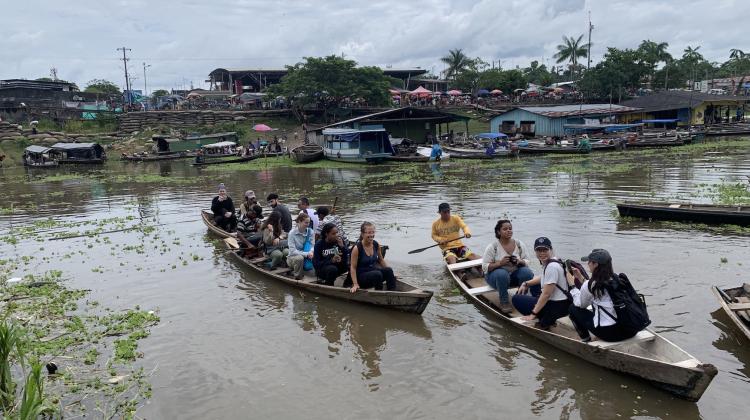Biodiversity and Cities: A Perspective in Colombian Cities

Biodiversity is declining worldwide, driven foremost by the intensification in land management and the transformation of natural areas for agriculture, industrial-scale forestry production, and human settlements. Urban areas have doubled since 1992 and, in comparison with 2020, are projected to expand between 30% and 180% until 2100, depending on the scenario applied. Notably, most of the urban growth is often located in regions of high biodiversity and affects ecosystems far beyond urban areas, through resource demands, pollution, and climate impacts. Therefore, biodiversity conservation in urban areas needs to be approached in a way that supports global conservation efforts. This course introduces the relationships between urban environments and biodiversity, how urban biodiversity influences ecosystem functions and underlying services that affect human well-being and whether urban habitats are hotspots or ecological traps (or neither) for biodiversity. The course will answer several questions such as: which synergies and trade-offs among biodiversity and ecosystem services exist in urban areas, which factors drive the relationships between biodiversity and socioeconomic and environmental drivers at different spatial scales, how can we leverage the power of computing and data in gaining insights on biodiversity, and how do urbanization-induced changes affect ecosystem functions and ecological networks’ complexity and diversity.
Biodiversity conservation through urban-regional strategies in an emerging field. There are significant gaps in our understanding that are critical to improving biodiversity conservation policies and management in urban areas that need to be analyzed, tested, and implemented to improve global biodiversity outcomes. Colombia, the most biodiverse country by square kilometer, has been a leader in this field and in 2021 launched the Biodivercities program to support cities through a combination of the latest research with practical solutions in the service of sustainable, inclusive, and nature-positive urban development. The Biodivercities program is led by the Ministry of Environment and Sustainable Development, in coordination with the mayor’s and planning offices of over 10 cities in Colombia. This program is informed by the Global Commission on BiodiverCities by 2030, a high-level forum of academics and practitioners convened by the World Economic Forum.
The class will be structured in two parts: 1) Academic discussions and 2) client-based and hands-on urban analysis and design projects. The academic discussions will be framed as a series of lectures in the focus areas, including international and Colombian guest speakers. The hand-on part of the work will be focused on the city of Leticia, Colombia, located in one of the most biodiverse and carbon-rich ecosystems in the world, the Amazon tropical forest.
Teaching team includes: Gabriella Yolanda Carolini, John E. Fernandez, Marcela Angel, Norhan Bayomi, Alessandra Fabbri
Editors: Vineet Abhishek, Joris Komen
Project managers: Maria Jimena Muzio, Amelia Seabold
Student participants: Patricia Michelle Garcia Iruegas, Marco L Herndon, Rebecca Helen Houston-Read, Courage Kpodo, Enrique B Montas, Lauren Christine, Moore Ada, Azania Umoja, Linh Trinh, Muhammad Rizki Rayani Ramadani


